A few weekends ago I ventured to the Korean Folk Village in Yongin. Sam and I had been planning to visit this place for a few months now, but I dare say we waited for the perfect time of year. The early November colours were ideally suited for walking around a charming little town depicting times past.

Korean Folk Village: Experiencing Korean Culture, History & Traditions
We spent a lot of time watching the different performances happening around the village, which included a tightrope walker carefully balancing his way across with the help of a hand-painted fan, an equestrian act intermixed with acrobatics to the rhythms of PSY’s Gangnam Style (very true to the period…ey, sexy lady, oh oh oh oh, oppa Gangnam Style!), and a traditional wedding ceremony which did not include a ‘You may now kiss the bride.’
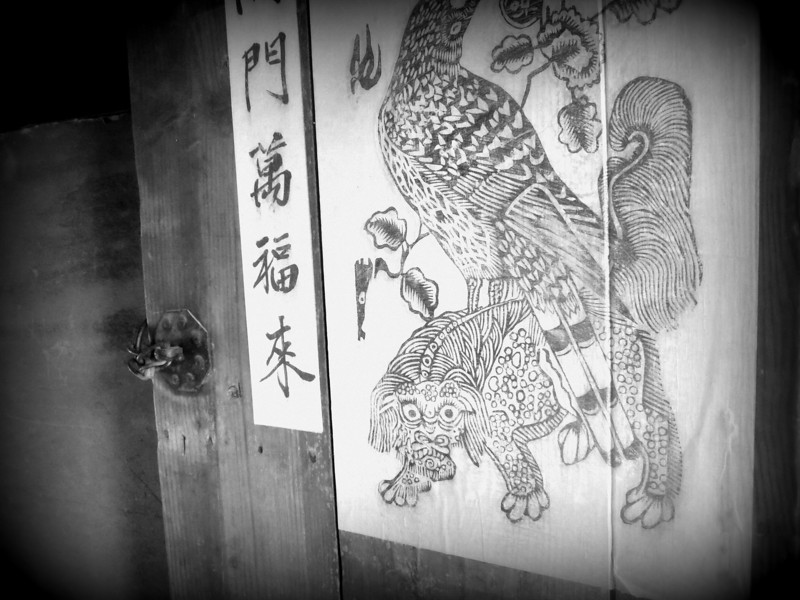
After taking in all the performances, we wandered around the hundreds of buildings that make up the village. There were pavilions, Buddhist temples, workshops, food markets, and homes for noblemen, scholars, farmers and commoners.
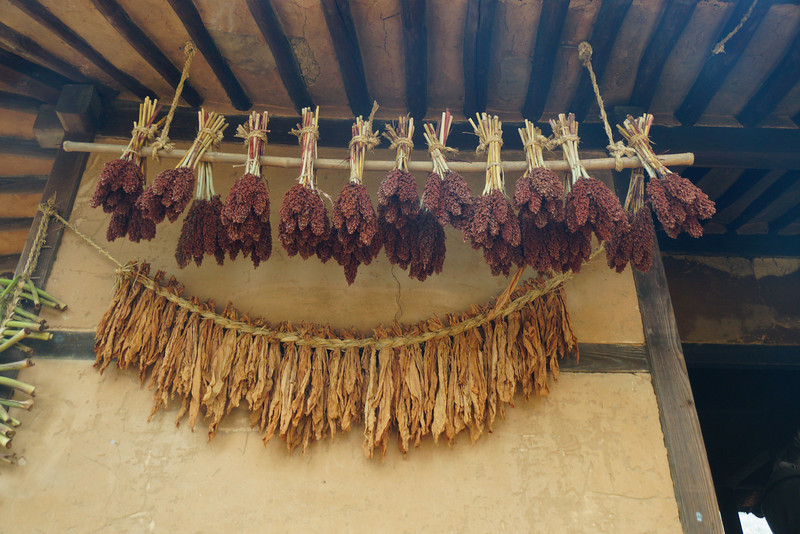
Daily Life In Korea 100s Of Year Ago: Preserved For Future Generations
There were scenes depicting daily life as it was hundreds of years ago: a smith making spoons, a carpenter at work on his next masterpiece, women sweeping the leaves off the dirt path, and a gardener tending his patch. My favourite was the man selling sweet pumpkin taffy; I bought a bag to send home for the holidays…totally gobbled that. (Sorry fam, that treat won’t be in the Christmas box, but there will be other things!)
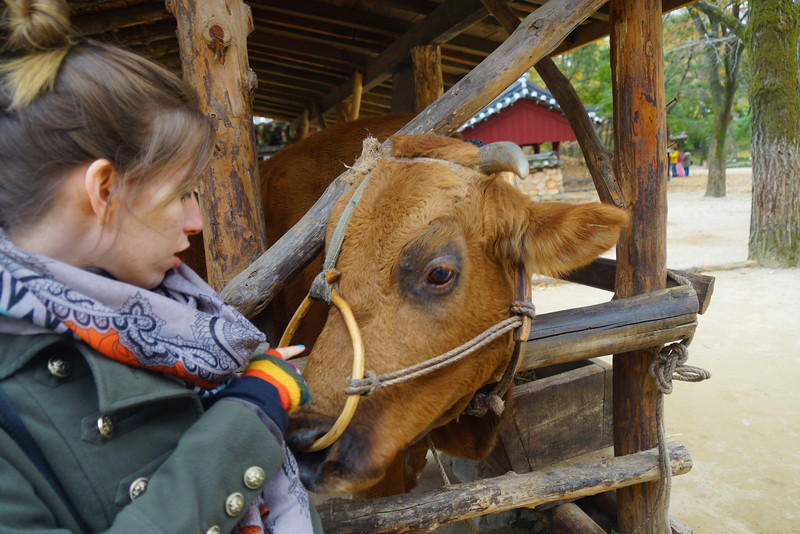
There was even a friendly cow (or would this be a bull – I see little horns). It had beautiful, thick eyelashes, but the saddest of eyes.
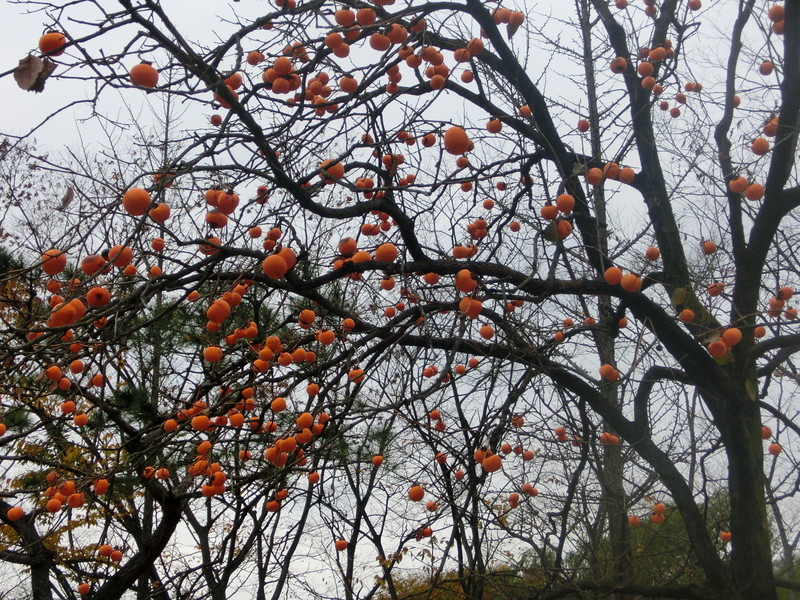
I also saw my first persimmon tree. They looked like oranges from a distance, but upon closer inspection they were more like orange tomatoes…yep, that’s my best description for you. Their bright colour against the bare branches and overcast sky made it look like a scene straight out of a Halloween movie.
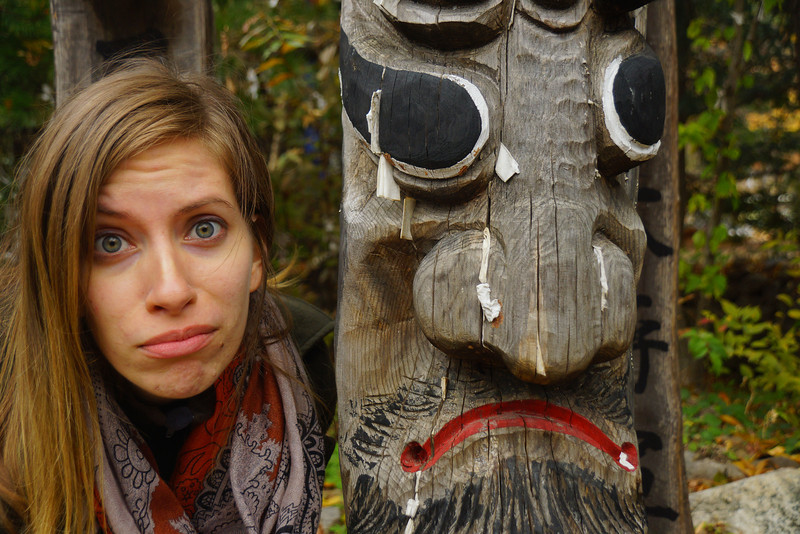
Wooden totem poles were a common sight at the village. These are called jangseung (장승) and were traditionally placed at the edge of towns to mark the boundaries and scare away any demons that were lurking around.

There was also a giant boulder near the park’s entrance where you could write down a wish and tie it on to the ropes that ran down. You could tell that many ‘wishers’ had come before us because the little pieces of paper had also taken over the nearby tree branches.
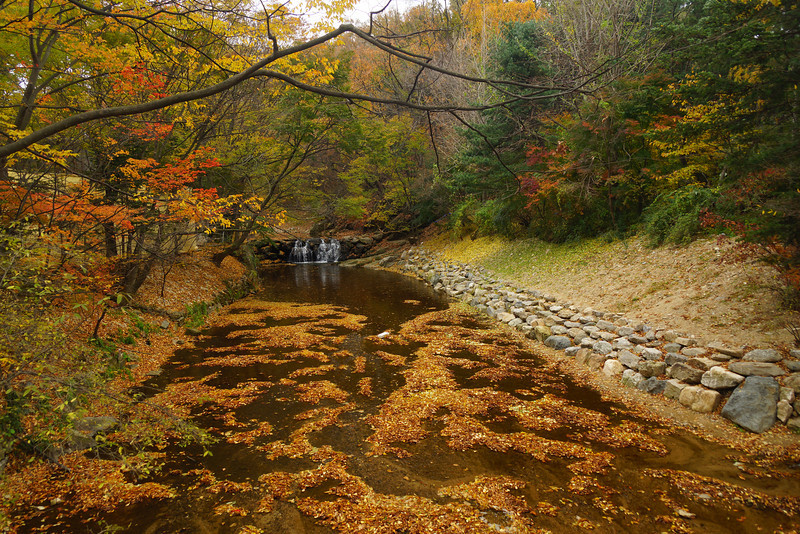
I’d say that’s a nice little place for an autumn weekend outing!
Getting there & Admission
If you are looking to visit the Korean Folk Village, there is a free shuttle bus service that runs from the Visitors Center at Suwon Station to the village several times a day. The ride is about 30 minutes. (Just be sure you check the departure times before hand!) Admission to the village is 15,000 won for adults.
Planning Your Visit to the Korean Folk Village: Tips, Seasonal Advice & Cultural Highlights
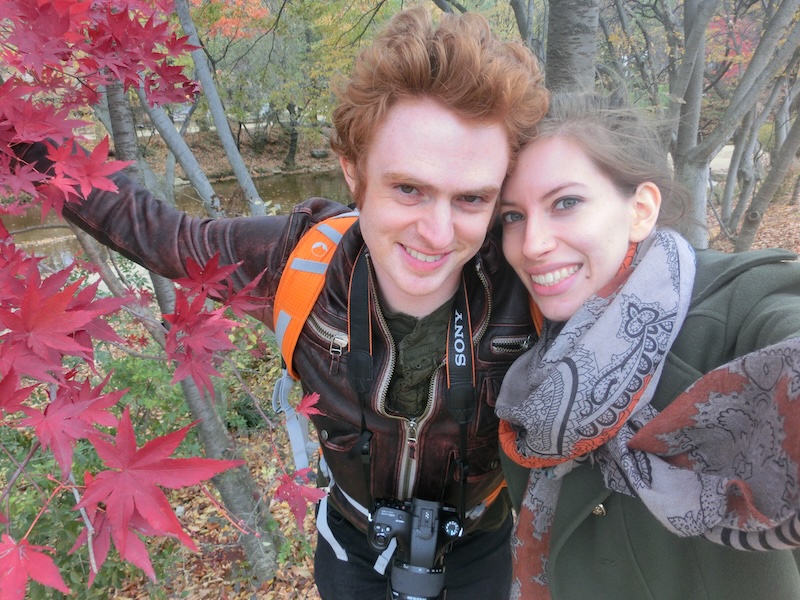
What to See & Do: Must-See Experiences in the Korean Folk Village
Here’s how to make your visit immersive and memorable:
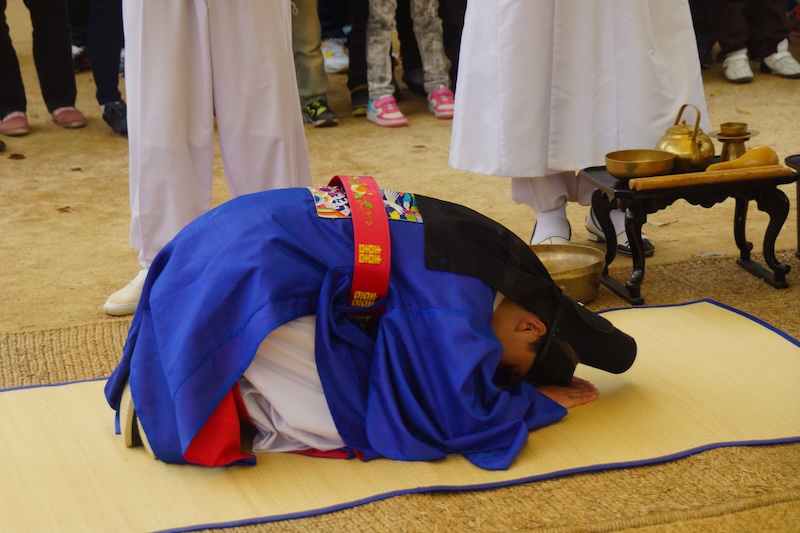
1. Live Performances & Traditional Arts
- Tightrope Walking (Jultagi): Don’t miss the show! The performer isn’t just an acrobat but also a storyteller and comedian, bantering with the crowd in true old-school style.
- Equestrian Acrobatics: Riders perform daring tricks atop galloping horses, often blending modern pop culture with centuries-old skills. A real crowd-pleaser!
- Traditional Wedding Ceremony: Watch a re-creation of a classic Korean wedding, complete with colorful hanbok, ceremonial bows, and ancient music. If you’re lucky, you may be invited to join in a small ritual.
Check the posted schedule on arrival—showtimes vary by season and weather.
2. Artisan Workshops & Hands-On Activities
Throughout the village, you’ll encounter open-air workshops:
- Pottery & Ceramics: Watch master potters spin clay and fire earthenware, or try your hand at shaping a cup (sometimes for a small fee).
- Weaving, Dyeing, & Embroidery: Learn about Korean textiles, from humble hemp to luxurious silk. Occasionally, there are demonstrations where you can join in.
- Metalwork & Carpentry: See how spoons, farming tools, or even musical instruments were made—no factory assembly lines here.
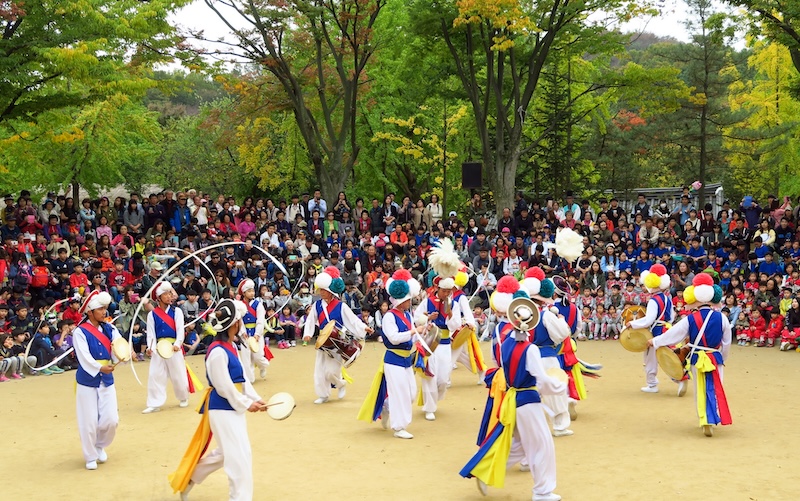
3. Folk Games & Interactive Fun
Depending on the season and schedule, you might be able to try:
- Yutnori: The famous Korean board game—look for oversized outdoor sets.
- Tuho: Tossing sticks into narrow-necked jars—a classic skill game for all ages.
- Neolttwigi: The traditional Korean “seesaw,” where players stand and propel each other into the air. (Don’t worry, staff will help!)
4. Explore the Architecture & Village Layout
The Korean Folk Village is home to over 260 buildings reconstructed from different regions and social classes. Here’s how to explore:
- Nobleman’s House (Yangban): Lavish homes with tiled roofs, beautiful courtyards, and formal reception halls.
- Scholar’s Study (Seodang): Where Confucian students would have pored over their texts.
- Farmer & Commoner’s Houses: Thatched roofs, simple kitchens, and domestic animals.
- Shamanic Shrines & Buddhist Temples: Notice the spiritual symbols—guardian deities, prayer stones, and jangseung totems.
- Workshops & Mills: Peek inside blacksmith shops, rice mills, and even traditional pharmacies.
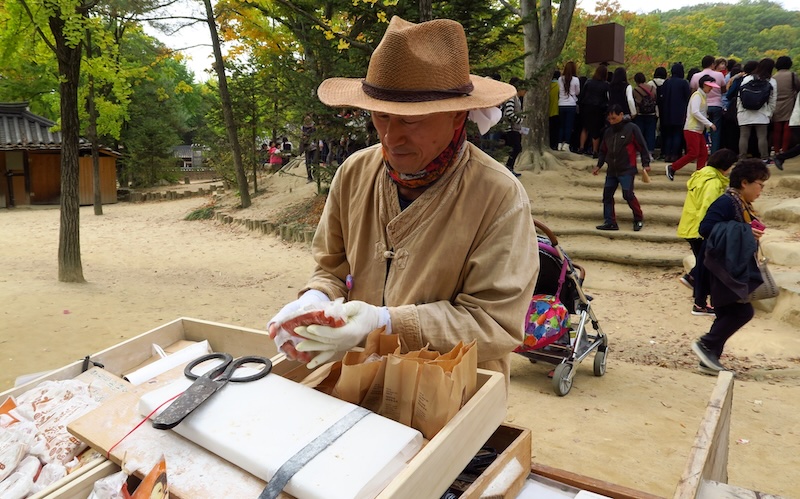
5. Food & Drink: What (and Where) to Eat
No village visit is complete without sampling some old-fashioned Korean snacks. Look for:
- Hotteok: Sweet, syrup-filled pancakes—warm, gooey, and deeply comforting.
- Tteokbokki: Spicy rice cakes (a modern twist, but always a favorite).
- Pumpkin Taffy (Hobaktang): Chewy, sweet, and addictively good (but maybe don’t promise your family any…).
- Makgeolli: Traditional Korean rice wine—mildly alcoholic, refreshing, and a great way to toast your outing.
- Seasonal specials: Persimmons in autumn, roasted chestnuts in winter, or icy sikhye (sweet rice drink) in summer.
Many food stalls are clustered near the central square, but don’t skip the smaller stands on the outskirts—they often serve up hidden gems.
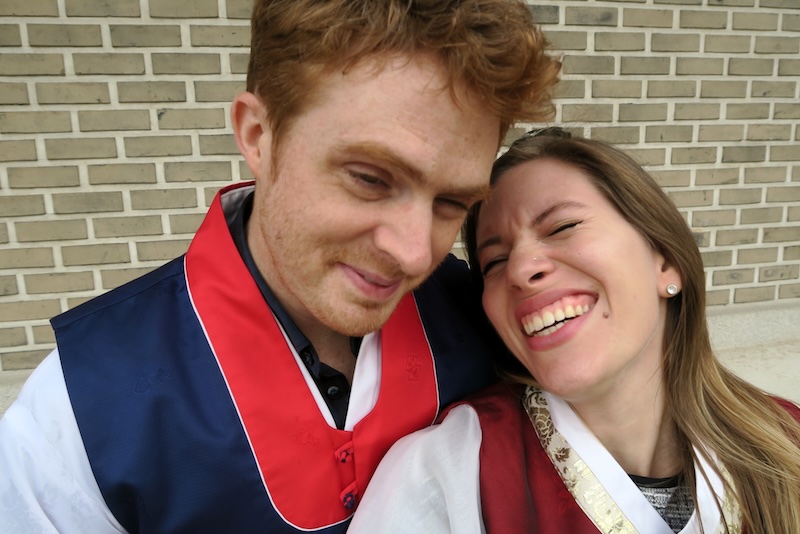
6. Hanbok Rental: Dress for the Part!
To really immerse yourself in the experience, rent a hanbok (traditional Korean dress). Not only does it make for amazing photos, but it also gives you a feel for how people once moved through daily life. Hanbok rental shops are available at the entrance and inside the village.
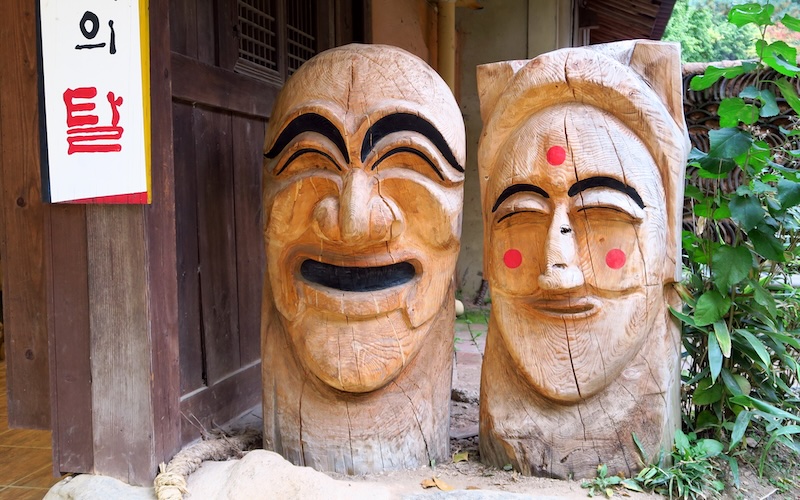
Practical Information: Tips for a Smooth Visit
- Admission: 15,000 won for adults (discounts for youth, children, and seniors).
- Hours: Typically 9:30 am to 6:00 pm, with shorter hours in winter—check the official website for updates.
- Getting There:
- Shuttle Bus: Free from Suwon Station’s Visitors Center (30 mins; check return times!)
- Subway + Taxi: Take Line 1 (dark blue) to Suwon Station, then a quick taxi (10–15 mins).
- Parking: Ample parking if you drive, but weekends can fill up fast.
- Accessibility: The grounds are mostly flat and stroller-friendly, though some paths are gravel or dirt.
- Weather: Most attractions are outdoors—bring a hat and sunscreen in summer, an umbrella in spring, and extra layers in winter.
- Language: Most staff speak basic English, and interpretive signs are bilingual (Korean/English).
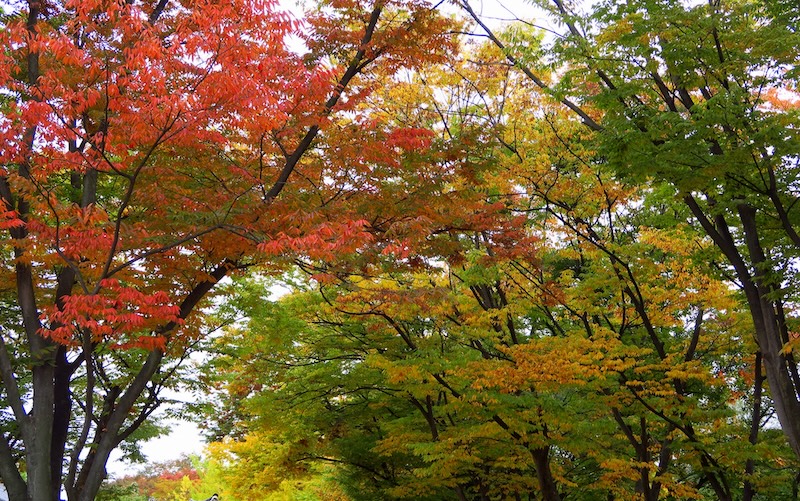
Plotting the Perfect Time Slot
| Season | What You’ll See | Why Go / Why Skip |
|---|---|---|
| Spring (Apr‑May) | Plum and cherry blossoms fringe the thatched roofs; traditional fan‑dance troupes add pop‑up shows for Buddha’s Birthday. | Mild temps, but expect packed weekends of school excursions. |
| Summer (Jun‑Aug) | Lotus ponds in full bloom, night‑market lanterns on Saturdays, and misting stations to fight the monsoon stickiness. | High humidity—bring a mini towel Korean‑style and a pocket fan. |
| Autumn (Sep‑early Nov) | Fiery maples + persimmon trees (the exact orange orbs I swooned over). Extra samulnori drum parades around Chuseok. | Hands‑down the best photography window; evenings get chilly so layer up. |
| Winter (Dec‑Mar) | Wood‑fire ondol rooms warmed for visitors, snow‑dusted hanok courtyards, and rice‑cake pounding demos for Seollal. | Short daylight, several outdoor craft stalls close for the season. |
Takeaway: if foliage photos are priority, aim for the last two weeks of October—golden ginkgo carpets and crimson maples in the nobleman’s compound hit peak at once.
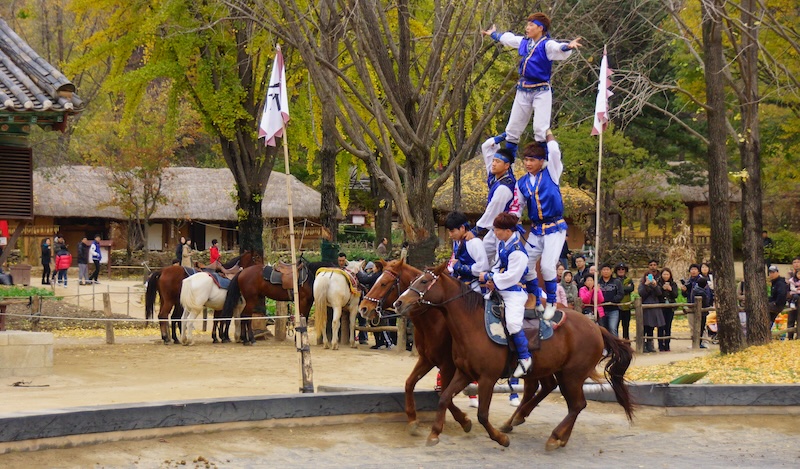
Performance Cheat‑Sheet (Complete Schedule)
| Show | Times | Don’t‑Miss Highlights |
|---|---|---|
| Namsadang Nori (farmer’s music & acrobatics) | 11:00 / 15:00 | Watch the sangmo ribbon‑hat dancer whip a 4‑m streamer in perfect spirals. |
| Juldarigi Tug‑of‑War | 12:00 (weekends) | Visitors join in—two straw ropes thicker than your torso. Collective bragging rights if your side wins. |
| Tight‑rope Walker (줄타기) | 13:30 | The clown’s jokey banter is in Korean, but the slapstick crosses language lines. |
| Traditional Wedding Re‑enactment | 14:30 | Spot the ham gift chest and try the chest‑bumping ceremony (paebaek) where in‑laws fling dates and chestnuts. |
| Equestrian Martial Stunts | 16:00 (Mar‑Nov) | Horseback archery + upside‑down saddle flips—a nod to Joseon‑era dispatch riders. |
Grab the free English timetable at the gate, circle your “musts,” and structure strolls accordingly—everything’s clustered around the central arena so you won’t sprint far.
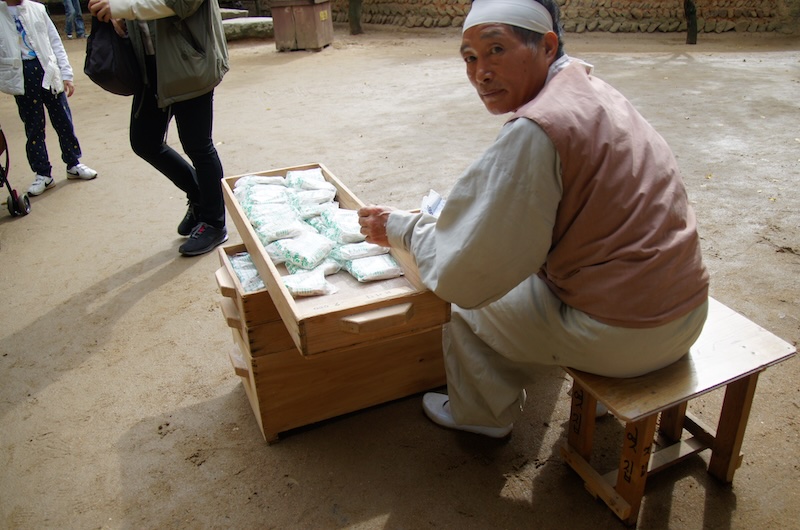
DIY Snack Crawl
The village doubles as an open‑air food court. My personal progressive‑lunch route:
- Hotteok Stand (near the smithy) – watch batter puff on a copper griddle, then oozing brown‑sugar syrup warms your hands.
- Janchi Guksu Noodle Stall – light soy broth with zucchini ribbons; a nice balance before heavier treats.
- Ssalgwaja Rice‑Cake Cookies – chewy, flower‑shaped, Instagram‑friendly, right by the nobleman’s house.
- Makgeolli Pavilion – ₩4 000 bowls of cloudy rice wine; the ajumma happily tops you up if you attempt even a single Korean toast (geonbae!).
- Pumpkin Yeot Taffy Cart – yes, the one I devoured before it ever hit a mail box; buy two sticks if you intend to share.

Hands‑On Workshops Worth the Extra ₩
- Dancheong Wood‑Stamping (₩5 000) – paint a temple‑pattern coaster to bring home.
- Rope‑Making with Grandfather Jo (₩3 000) – twist rice‑straw into a bracelet while he explains how villagers once crafted ox harnesses.
- Hanji Lantern Craft (₩10 000) – afternoon only; reserve early at the paper workshop.
Each session runs 20–40 min and you keep the souvenir—handier than another magnet.
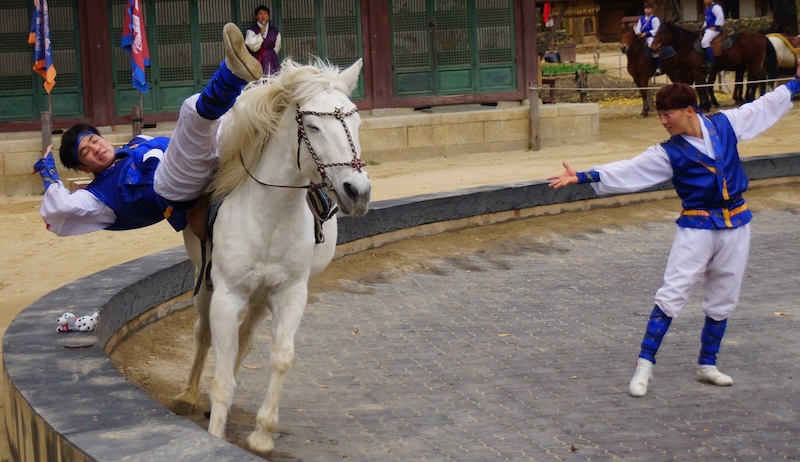
Making the Most of Your Day: Suggested Itinerary
Morning: Arrive early, stroll the quieter side paths, watch the artisans begin their crafts.
Late Morning: Catch the first performances—tightrope or wedding ceremony.
Lunch: Grab street food in the market area, or bring your own picnic.
Afternoon: Join a hands-on workshop, try a folk game, and snap photos by the river or with the jangseung totems.
Before You Leave: Write a wish, tie it to the sacred boulder, and take a final wander for those golden-hour photos.
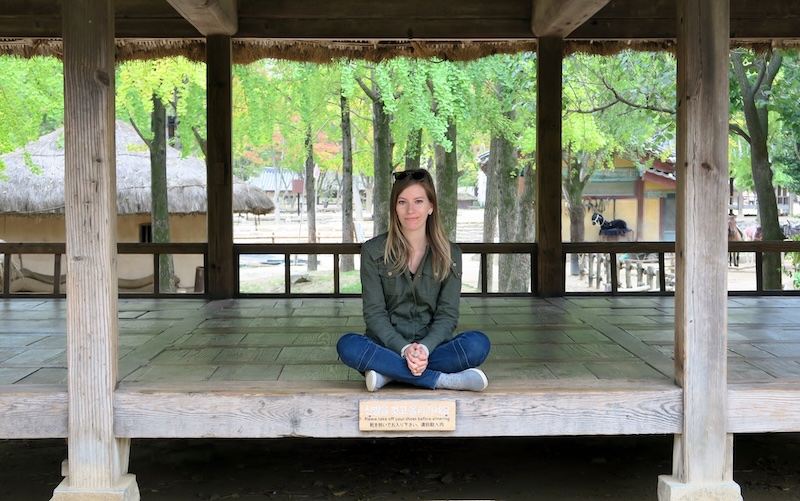
Quick FAQ Round‑Up
- Wheelchair / stroller friendly? Mostly—main lanes are packed dirt; a few hillside houses require steps. Rental strollers (₩3 000) by main info kiosk.
- Pet policy? Small dogs allowed on leash, but keep them clear of livestock pens.
- English signage? Yes—house plaques, workshop explanations, and map legends. Performance MCs ad‑lib mostly in Korean yet visuals convey the story.
- Cash or card? Both. Food stalls accept T‑money tap, but craft workshops prefer cash. ATMs beside the folk‑medicine shop.
- Rainy‑day viability? 40 % of structures have covered eaves; shows move to the indoor arena. Pack a clear umbrella for moodier photos!
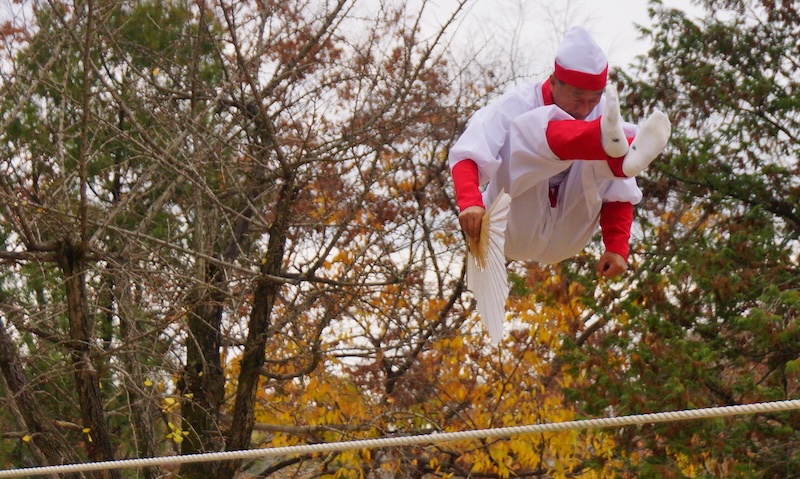
Have you visited the Korean Folk Village? Any favorite performances or surprises? Let us know in the comments!

Beautiful scenery. Autumn in Korea’s more beautiful than in China :-). Loving this place, but… where is Sam ;-)? Have you lost him somewhere?
Camera shy? Haha, no, I’ll post more pictures of him in upcoming post….aherm, surrounded by cats.
Great set of fall pics. Halloween movie tomatoes look interesting. A cow fits a fall color scheme. A wooden totem pole looks cute. Not because of you in the picture. I mean that without you it would still look cute 😉 The last pics describes why I like landscape photography in fall. Enjoyed.
Thanks Alex! Glad you liked them. Haha, yeah that totem pole is supposed to scare away demons but it looks rather ‘cute’ and…sad.
The totems look Canadian, don’t they? Funny everything is written in Chinese too!
Looks cold over there, you have your winter coat on!
Very Canadian – even though I’ve never seen a Canadian totem pole in person…haha.
Yep, it’s now officially freezing cold in Korea. I think I’ll be hibernating from now until I leave in 3 months. Ottawa must be getting pretty bone-chilling too, no? 😉
I love the shot of that persimmon tree! I want one in my backyard someday… We had a client at our landscape architecture firm few years ago who wanted to cut down their persimmon because they didn’t like the shade. Um, what?!
Looks like a beautiful spot. I love the shot of the drying herbs, too.
They are beautiful trees! Can’t say I’ve ever seen one back in Canada, so I was very excited to see persimmons for the first time this fall. 🙂
What a great experience! Love your photos! I wasn’t even sure if I knew that persimmons grow on trees before 🙂
Neither did I! But they’re sure something to look at. 😉
Jangseung (장승)? There, I learnt something new about Korean culture! Didn’t know there was a traditional village so close to Seoul. Might visit next time for the traditional Korean wedding ceremony 😀
I absolutely love the persimmon tree photo. When I looked at it oranges were the first thing on my mind too. 🙂
I’m a huge fan of traditional villages and they always seem to be where you least expect them. I love the fall photo’s reminds me of fall in Japan with the persimmon tree 🙂
Gorgeous shots. <3 And what a great place to visit. I know so little about Korean history, I'd love to go to a place like this and see how things used to be. 🙂